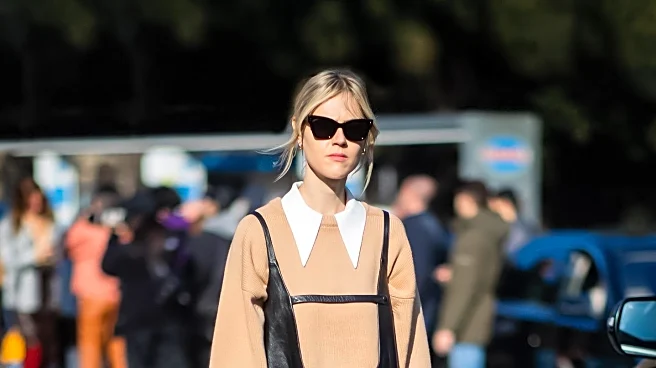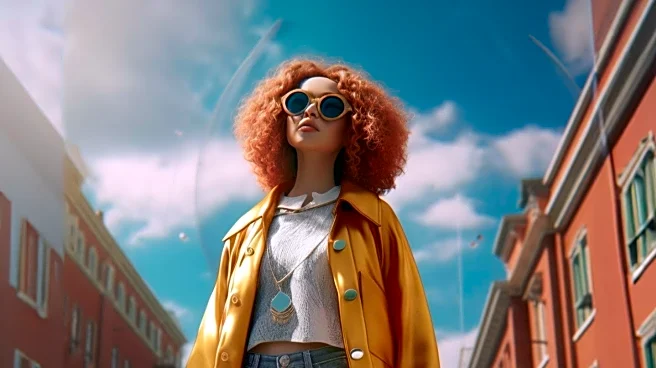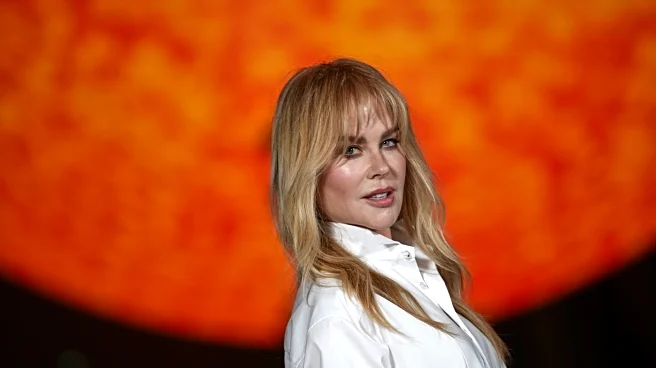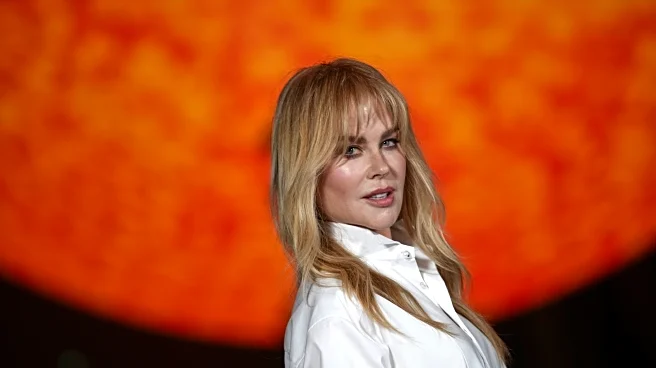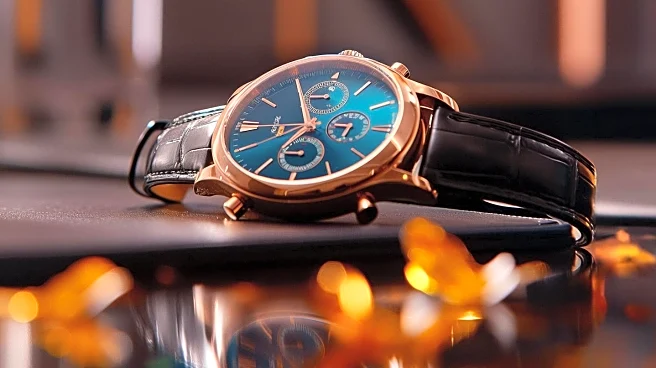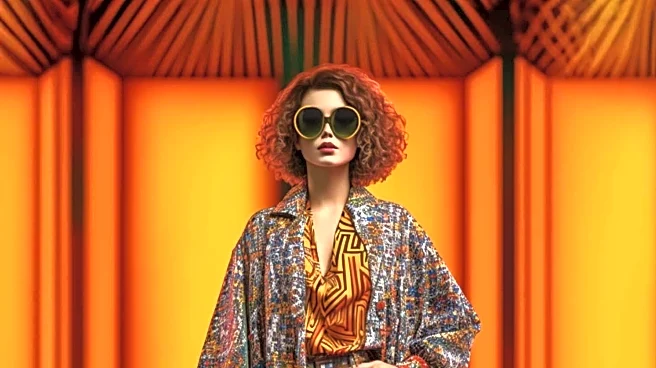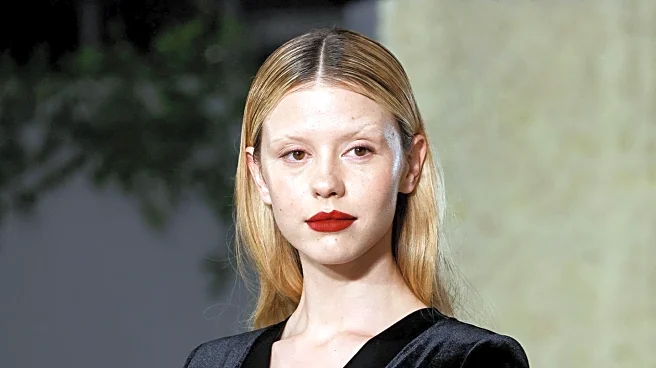What's Happening?
During the recent fashion weeks in Milan and Paris, several major fashion houses showcased collections that included both men's and women's designs on the same runways. This approach, while innovative, has led to mixed reactions regarding the effectiveness and appeal of the men's clothing presented. Some designers argue that the integration of men's and women's lines is justified by shared design elements, while others suggest it is a cost-saving measure. The men's clothing often appeared as an afterthought, with designs such as sleeveless halter tops and see-through shirts that may not resonate with traditional male consumers. The creative director of Valentino, Alessandro Michele, known for his gender-fluid designs, continues to challenge conventional fashion norms, though the commercial viability of these styles remains uncertain.
Why It's Important?
The blending of men's and women's fashion lines reflects broader trends in the industry towards gender fluidity and inclusivity. However, this approach raises questions about the commercial appeal and marketability of such designs, particularly in the men's fashion sector. Retailers may be hesitant to invest in men's clothing that deviates significantly from traditional styles, potentially impacting sales and brand reputation. The fashion industry's push towards gender-neutral designs could influence societal perceptions of gender norms, but it also risks alienating consumers who prefer conventional styles. The success of these collections will depend on consumer acceptance and the ability of brands to balance innovation with market demands.
What's Next?
Fashion houses may need to reassess their strategies for integrating men's and women's designs, considering consumer feedback and sales data. Brands could explore targeted marketing campaigns to promote gender-fluid styles and educate consumers on the versatility of these designs. Additionally, designers might refine their collections to better align with consumer preferences, ensuring that men's clothing is not perceived as secondary to women's fashion. The industry will likely continue to experiment with gender-neutral designs, but the commercial success of these efforts will depend on their ability to resonate with a broad audience.
Beyond the Headlines
The integration of men's and women's fashion lines highlights ongoing discussions about gender identity and expression in society. As fashion becomes a platform for challenging traditional gender norms, it may contribute to broader cultural shifts towards acceptance and inclusivity. However, the industry must navigate the complexities of consumer preferences and market dynamics to ensure that these progressive designs are both commercially viable and socially impactful.

